A ball of snow falling from above can cause serious injury or death. To avoid negative consequences, snow holders are mounted on the roof, choosing a structure of a suitable configuration and size. We propose to deal with the existing varieties.
Read in the article
- 1 Advantages and disadvantages of roof snow retainers
- 2 Roof snow guards: basic functions
- 3 Characteristics of snow holders on the roof, depending on the type of construction
- 3.1 Tubular snow holders for roofs: distinctive features
- 3.2 Lattice snow holders
- 3.3 Plate snow holders
- 3.4 Point snow holders
- 3.5 Log as a snow holder
- 4 Which is better to buy a snow guard on the roof - our editorial team's recommendations
- 5 How to properly install snow guards on roofs of different types
- 5.1 Installing snow guards on a metal roof: sequence of actions
- 5.2 Installation of snow guards on a roof made of corrugated board: installation procedure
- 5.3 How to install a snow guard on a folded roof: installation technology
- 5.4 Installation of snow guards on a soft roof
- 6 How to make a snow holder on the roof with your own hands: possible options
- 6.1 Corner snow catchers on the roof
- 6.2 Roof lattice snow holders
- 6.3 Snowstop
- 6.4 Tubular snow holders
- 7 How much do roof snow guards cost - price overview
Advantages and disadvantages of roof snow retainers
The need to install snow-retaining devices for the roof is dictated by their undeniable advantages. They are:
- protect roofs from heavy snow load;
- presented in a large assortment. Allows you to choose a suitable option for execution and color design;
- have sufficient strength. A properly installed structure is capable of withstanding significant loads;
- easy to assemble. Installation can be done in-house;
- allow installation at various stages of the roof construction.
Among the shortcomings, it is worth noting the need for careful adherence to the installation sequence. Otherwise. instead of a positive effect, the opposite will be achieved. In addition, additional funds are required for their manufacture and installation.
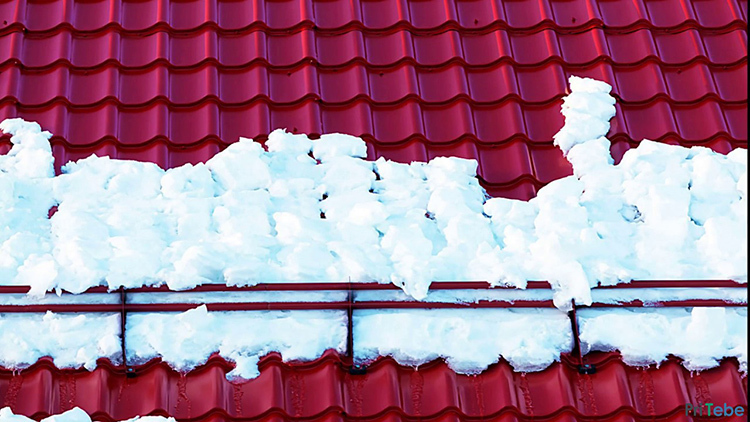
Roof snow guards: basic functions
Installation of snow-retaining structures is carried out for:
- maintaining the integrity of the roof. When snow melts from a metal roof, scratches appear on the surface of the roofing material, which can provoke corrosion processes due to a violation of the integrity of the protective coating. In the presence of snow holders, such damage does not appear;
- preventing the risk of injury to passers-by, plants and vehicles when snow falls. They are installed on all roofs with a slope of more than 6º;
- prevent deformation of the drain. A significant snow load can damage the gutter and brackets that hold these structural elements;
- preventing overloading of the roof frame. Knowing how to properly install snow holders on a metal tile or other roof, you can redistribute the load;
- ensuring thermoregulation. The snow cover increases the thermal insulation of the roof, keeping the house warm. This is especially true for metal roofing;
- giving the structure a complete appearance.
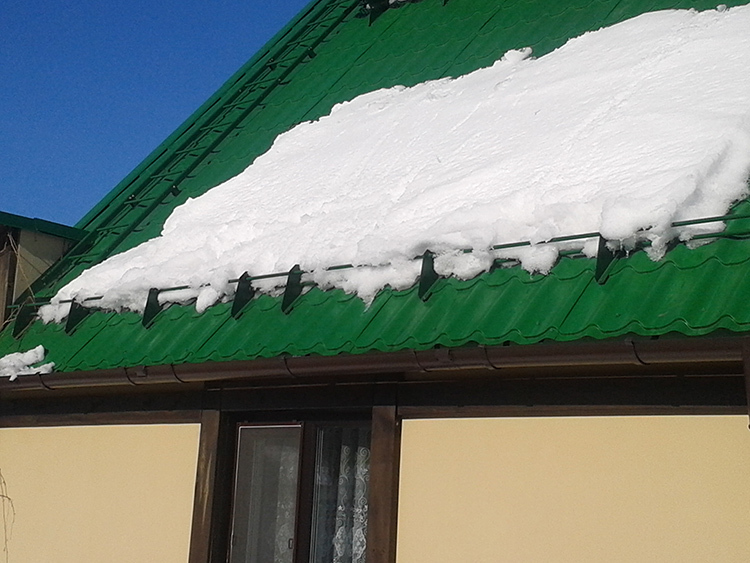
Characteristics of snow holders on the roof, depending on the type of construction
The characteristics of snow guards depend on their design features. To choose a suitable option, it is worthwhile to get acquainted with the possible ones.
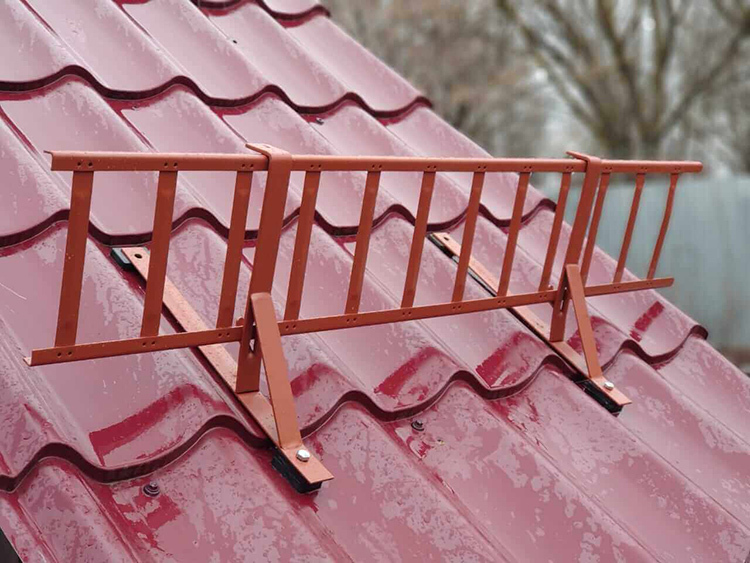
Tubular snow holders for roofs: distinctive features
Such structures were named due to the use in the production process of pipes held by special brackets. Their number may vary. Typically, tubular roof snow guards consist of 2 to 3 pipes with a diameter of 15 to 30 mm to hold the snow. The height of such a structure is about 15 cm, which prevents the avalanche-like sliding of the snow mass.
The brackets are made in the form of a corner. Its vertical shelf has special holes for pipes. The horizontal shelf is used to attach the snow bar to the roof surface.
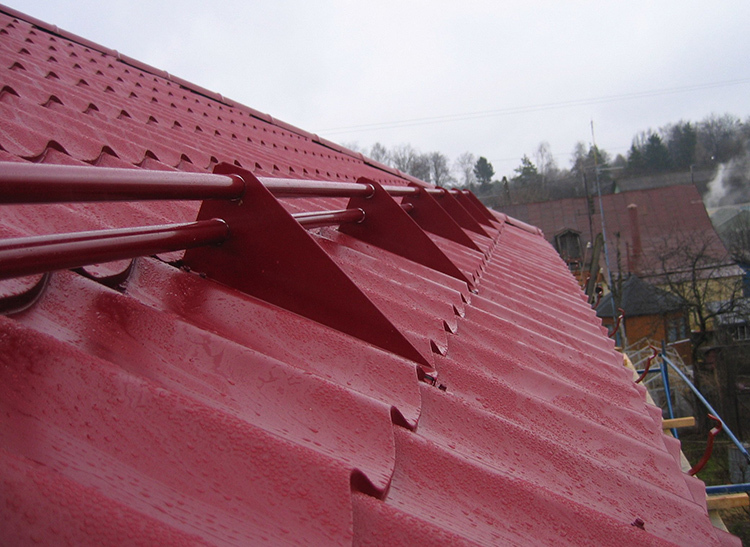

A comment
Mikhail Starostin
Head of the team of the repair and construction company "Dom Premium"
"The configuration of the fastening brackets is selected based on the type of roofing material and the required fastening method.
Geometric parameters are selected taking into account the required strength. Between the surface of the flooring and the lower pipe, a maximum gap of about 3 cm is provided, and between the pipes 8 - 10 cm.
Tubular snow cutters on the roof cut through the snow layer, ensuring that only small batches fall down. They are mounted in one row along the entire cornice. If the region is characterized by abundant precipitation, the snow holders are arranged in two rows with a step of 1 - 2 m.
Attention! Tubular snow holders are chosen if the roof angle is less than 60º.
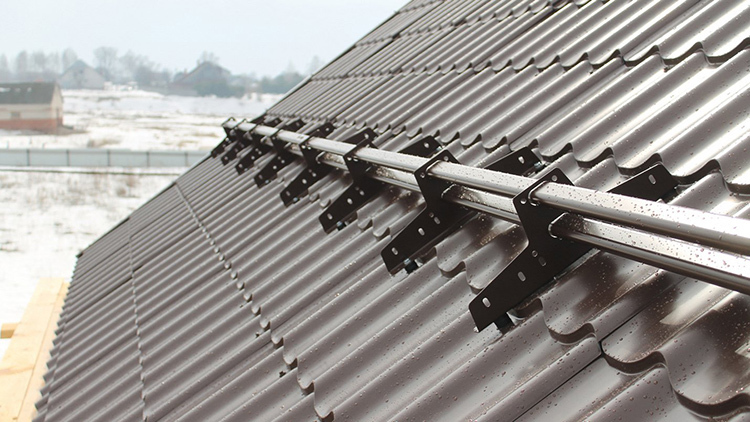
Lattice snow holders
Such structures are able not only to cut the snow layer, but also to prevent it from falling. The procedure depends on the size, pattern and material of the grilles installed. Elements made of galvanized wire, steel profiles or reinforcement allow small batches of snow to pass through. Products made of sheet material with a large number of holes with a diameter of 10 - 12 mm prevent snow from falling down.
The snow guard is held in place with a suitable type of bracket. Its height is usually chosen in the range of 5 - 20 cm, depending on the average thickness of the snow cover in a particular region.
The strength characteristics of lattice models directly depend on the materials used in their manufacture. Products from sheet material will be the stronger, the thicker the sheet used in their manufacture. They are mounted in one row. With a small layer thickness, the row is not made continuous. The gap width is up to 30 cm.
Attention! Lattice models have no restrictions on the type and angle of the roof.
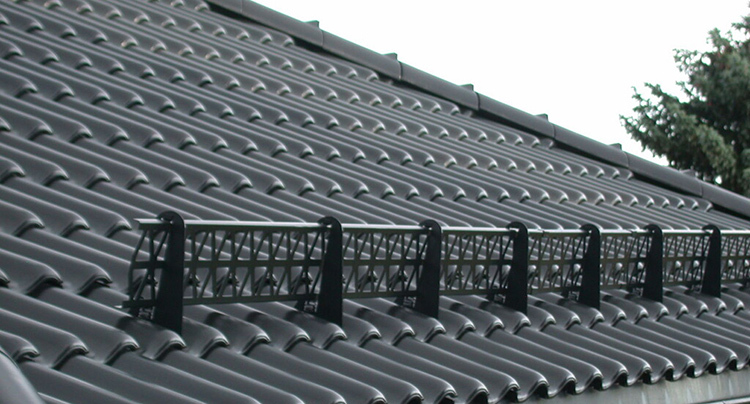
Plate snow holders
Such snow holders are sometimes called corner ones, since during their manufacture the steel sheet is bent in a certain way to form an angle. A suitable option for a roof made of metal or corrugated board. Taking this into account, the material for the manufacture of lamellar snow holders is also selected. They are mounted along the cornice in at least 2 rows, located with a step of 1 - 1.5 m with a break in 2 - 3 waves.
Attention! Compared to other types of snow retainers, lamellar ones have the lowest strength. Selected for regions with low snowfall.
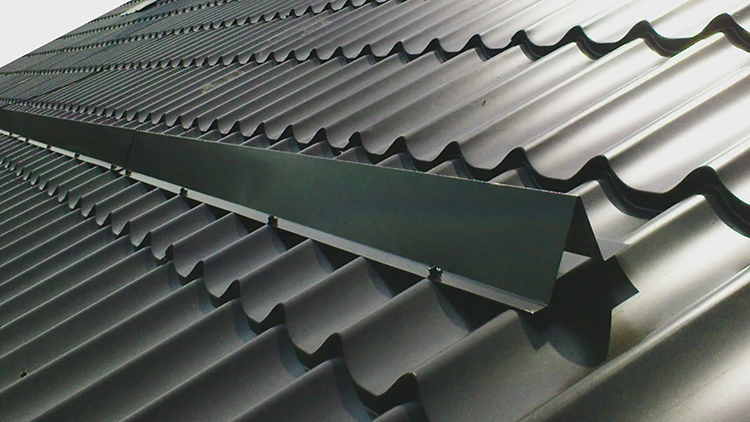
Point snow holders
These are sometimes referred to as yokes. They have a triangular shape. Fastened on a long leg to the crate. They are used as an addition to other snow holders, since they are not able to hold a large layer of snow. Most often they are mounted with lamellas on a roof with a soft roof, which has a rough surface. The yokes are staggered with a pitch of 0.5 - 0.7 m.
Attention! Point snow holders are mounted during the laying of the roofing material.
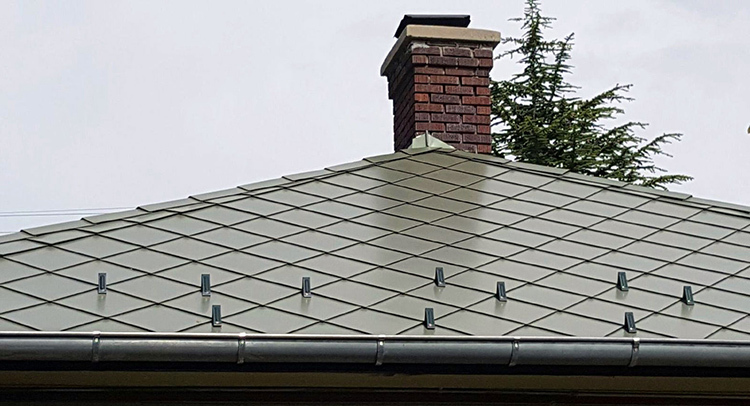
Log as a snow holder
A log can act as a snow retainer. Such structures have traditionally been installed on buildings in the Alpine mountains. Today, similar systems are found in modern buildings, becoming a worthy replacement for metal devices. Increased requirements are imposed on their installation due to the risk of frost under the stopper, which can pull the log out of the fasteners.
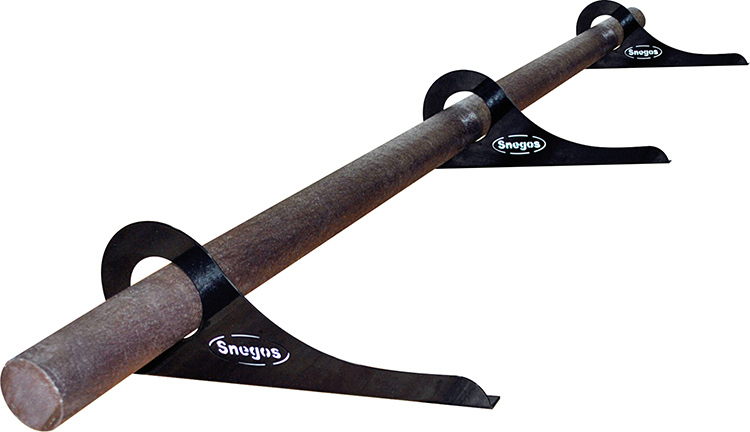
Which is better to buy a snow guard on the roof - our editorial team's recommendations
When choosing a suitable option, take into account:
- type of roofing material. The configuration of the installed stopper depends on the type of roof. Not only the requirements for appearance and colors are taken into account, but also the order of attachment;
- the time when the installation is to be carried out. Some systems are installed at the stage of roofing. After the completion of the installation work, the installation of structures screwed into the crate becomes impossible;
- snow load. The weight of snow that a particular model can hold varies over a wide range. With light rainfall, a 75 kg model is sufficient. For snowy regions, products that can withstand up to 300 kg are purchased.
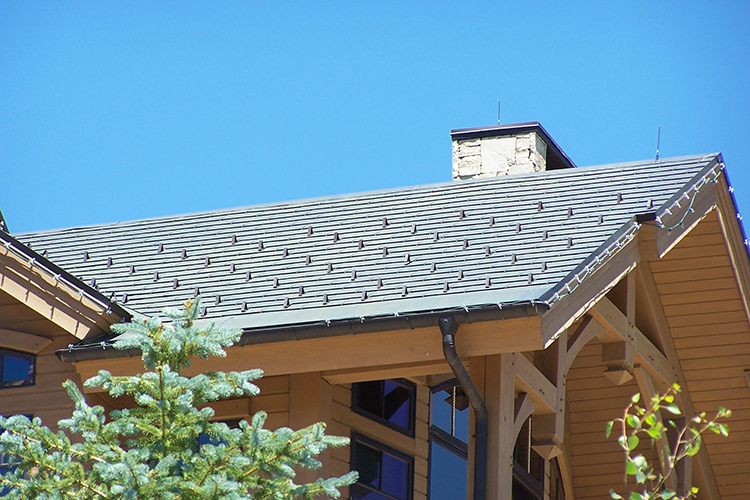
How to properly install snow guards on roofs of different types
In order for the mounted structure to be able to cope with the task assigned to it, it is worth figuring out how to properly install the snow guards on the roof. The sequence of actions depends on the type of roof and its design features. We invite you to get acquainted with the distinctive features.
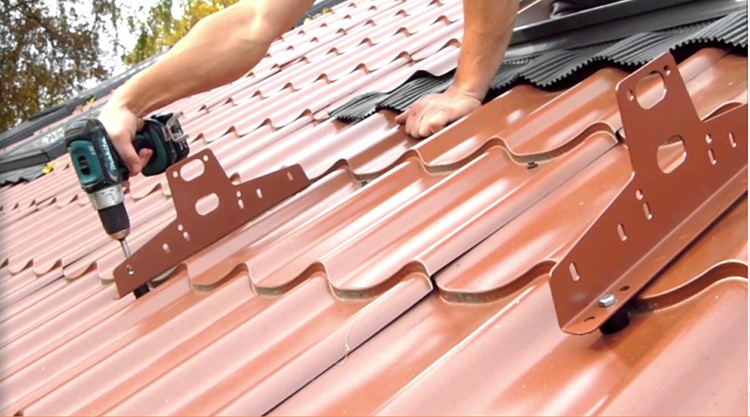
Installing snow guards on a metal roof: sequence of actions
Metal tile is a fairly popular roofing material. The configuration of the sheets contributes to the constant convergence of snow down. The roof itself quickly reacts to temperature fluctuations. An increase in temperature leads to the fact that the formation begins to slide along the surface, breaking down. This circumstance makes the installation of snow guards on a roof made of metal tiles mandatory.
The choice may be in favor of a corner, lattice, tubular structure. The first type is relevant for winters with little snow. Otherwise, the other two types are preferred.
Installation of snow holders on metal tiles is performed in the following sequence:
| Illustration | Description of action |
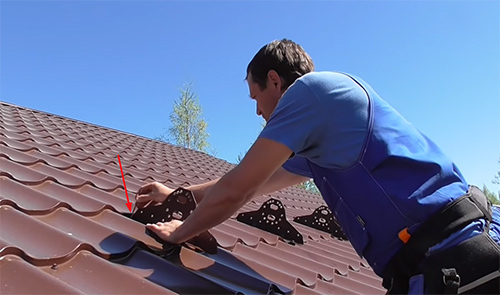 | Marking is performed in the installation area. The brackets are positioned according to the manufacturer's recommendations. No more than 30 cm recede from the edge of the roof |
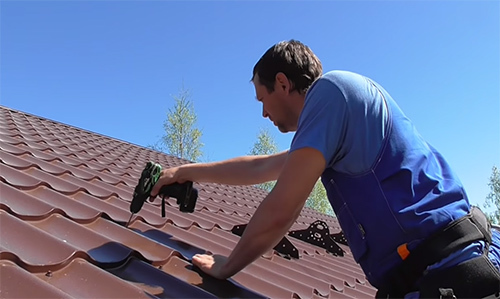 | Holes are drilled according to the markings. Work must be done carefully so as not to damage the protective coating |
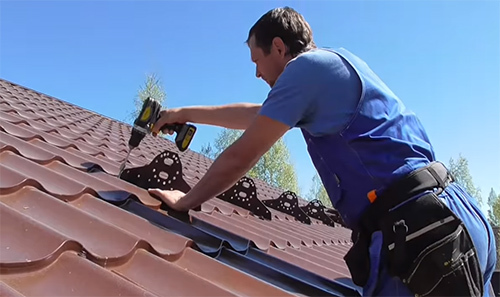 | Attachments for snow holders are screwed to the roof on the metal tile, which ensure their correct spatial position |
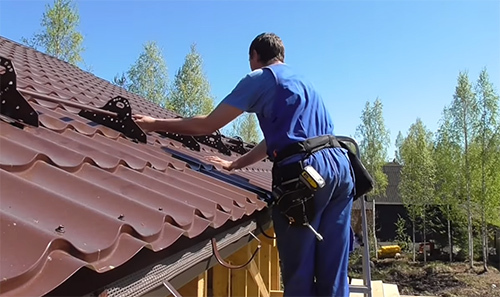 | A pipe is threaded through the brackets. The individual elements are connected to each other by means of a nut. The second pipe is inserted in the same way. Plugs are put on their ends. |
We offer you to watch a video showing how to attach snow guards to metal tiles:
Installation of snow guards on a roof made of corrugated board: installation procedure
According to its characteristics, the corrugated board is close to the metal tile. That is why, due to the sensitivity to temperature fluctuations, the installation of snow guards on the roof made of corrugated board is mandatory. The choice is made in favor of plate, lattice and tubular models. The last type is the most widespread.
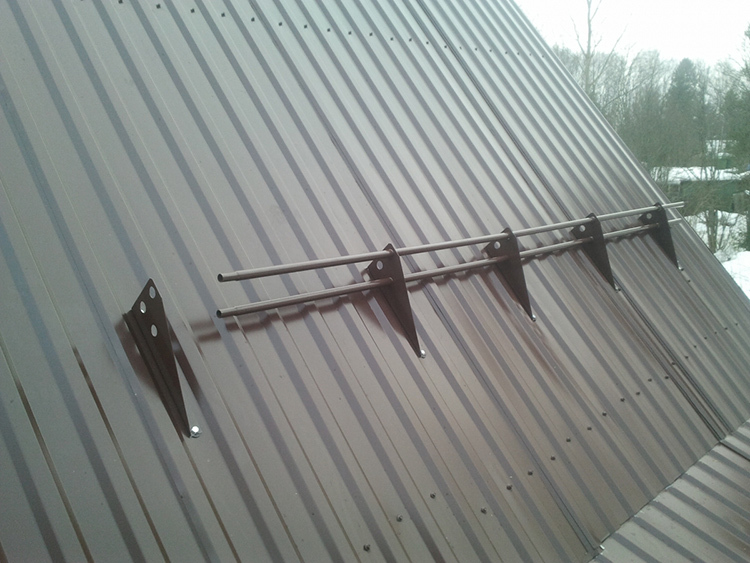
The technology for installing snow guards on a roof made of profiled sheet includes the following steps:
- fastening of supporting elements through roofing material. They are located in the lower part of the profiled sheet wave;
- reinforcement of the lathing. If the roof is already fully assembled, the sheathing is partially disassembled to strengthen it. When installing a corner or plate product, you can refuse to reinforce the lathing;
- sealing of the mounting holes with weatherproof rubber gaskets.
We offer you to see how to install snow guards on a roof made of corrugated board:
How to install a snow guard on a folded roof: installation technology
For such a roof, a tubular or lattice structure is usually chosen. The algorithm for performing work differs from the previously listed technologies only in the order of installing the brackets. The works are performed in the following sequence:
| Illustration | Description of action |
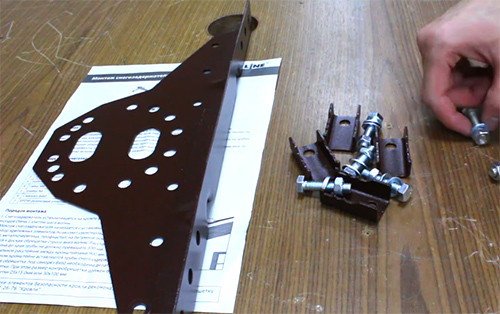 | A bracket is selected specifically for the rebated roof. Its completeness is checked. There should be four brackets and attachment to them |
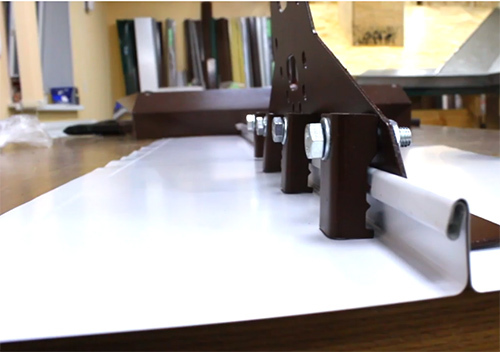 | The bracket is mounted on a rebate, while the brackets are located at an equal distance. All bolts are carefully tightened. Washers must be installed |
When using this technology for installing snow catchers on the roof, you can abandon the reinforcement of the crate. The work is carried out after the roofing material has been laid. A well thought-out design allows you to evenly distribute the load on the roof.
Installation of snow guards on a soft roof
Due to the large roughness of the roofing material, snow guards for soft roofs are a must-have accessory. The installation of yokes is carried out using the following technology:
| Illustration | Description of action |
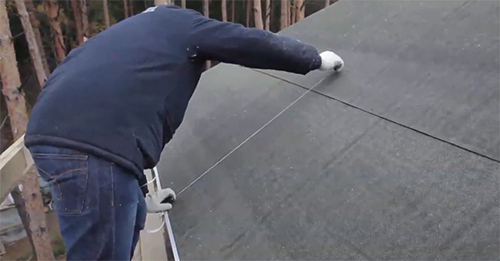 | The roof slope is being marked. Products are placed in a checkerboard pattern 2 - 3 times with a step of 0.5 - 0.7 m |
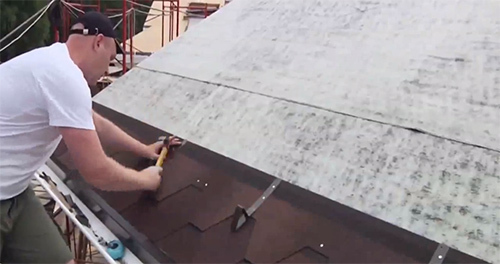 | The yoke is attached to the crate. Each element is fixed with two nails or screws. |
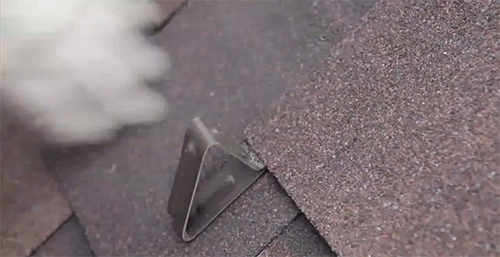 | Lay the next sheet. It is positioned so that the triangular part of the yoke remains outside. |
How to make a snow holder on the roof with your own hands: possible options
If it was not possible to purchase ready-made structures, you can make snow holders for the roof with your own hands. The sequence of actions will directly depend on the selected type. We invite you to get acquainted with the possible options.
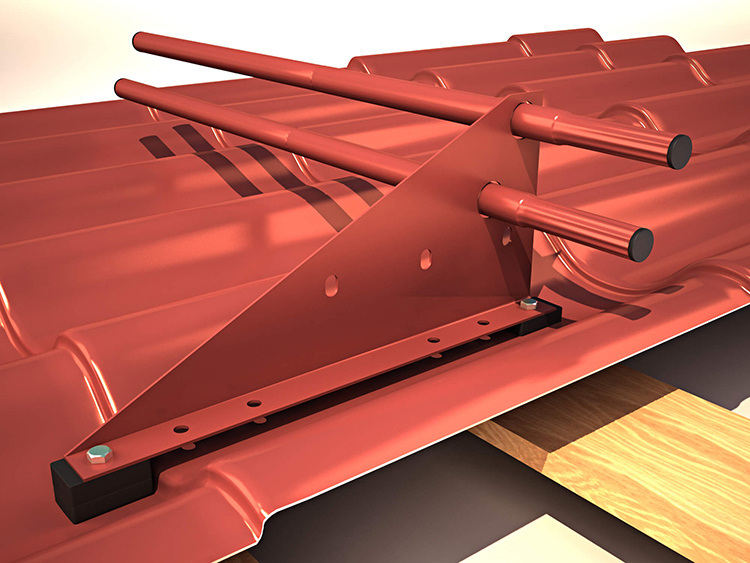
Corner snow catchers on the roof
This type is the easiest to manufacture. To work, you must have in stock:
- scissors for metal;
- Metal sheet;
- listogib;
- drill;
- measuring tool and marker.
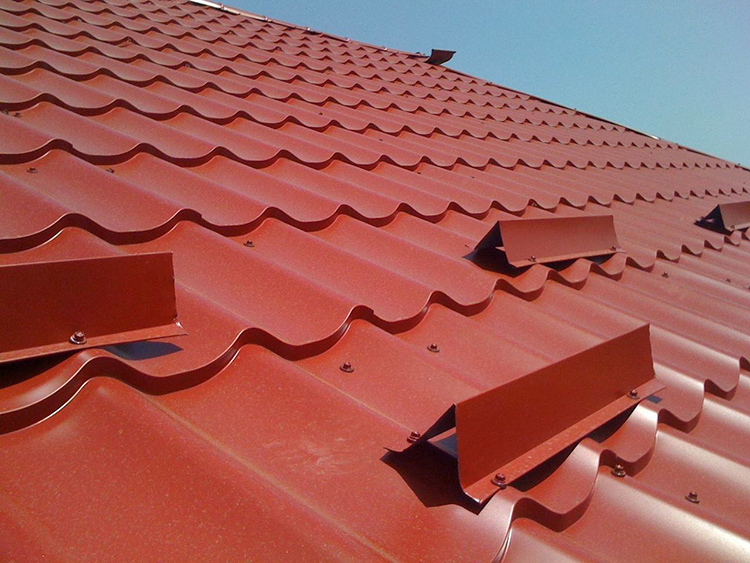
The manufacture of corner snow catchers is carried out in the following sequence:
- a drawing is being prepared, a template is cut out;
- sheet material is being marked;
- elements are cut to size;
- the parts are fixed on the desktop. With the help of a listogib, the elements are given the required shape. As a result, corners with two shelves 15 - 20 cm high are obtained.
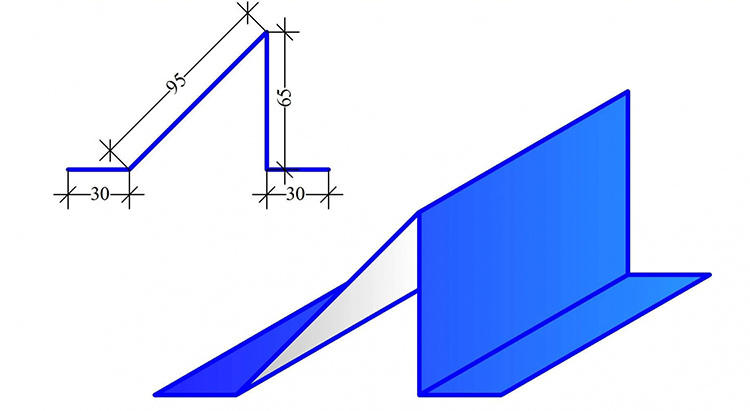
Roof lattice snow holders
Work begins with the development of a drawing. The dimensions of the structure are selected taking into account the size and configuration of the roof, as well as a number of additional factors. The product is made in the following sequence:
- triangular elements are cut from sheet steel to be used as brackets. They are given the required shape so that they can be fixed on the roof surface;
- rectangular elements are cut out. Holes are drilled in them to form the selected pattern;
- the corners are connected to the main part by means of a threaded connection or welding.
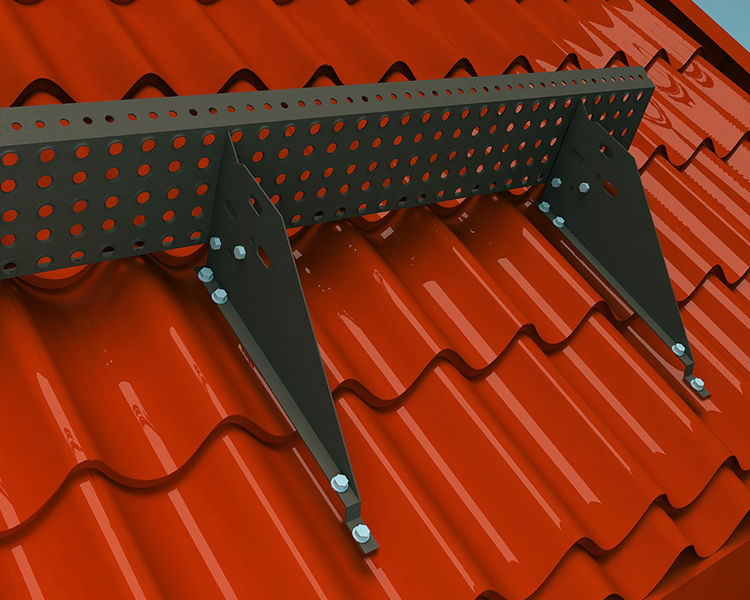
Snowstop
Snow stop hooks are easier to manufacture than lattice counterparts. The works are performed in the following sequence:
- marking is applied. Rectangular parts are cut to size;
- form the element, giving a triangular shape to a part of the workpiece. The second part should remain straight;
- mounting holes are drilled.
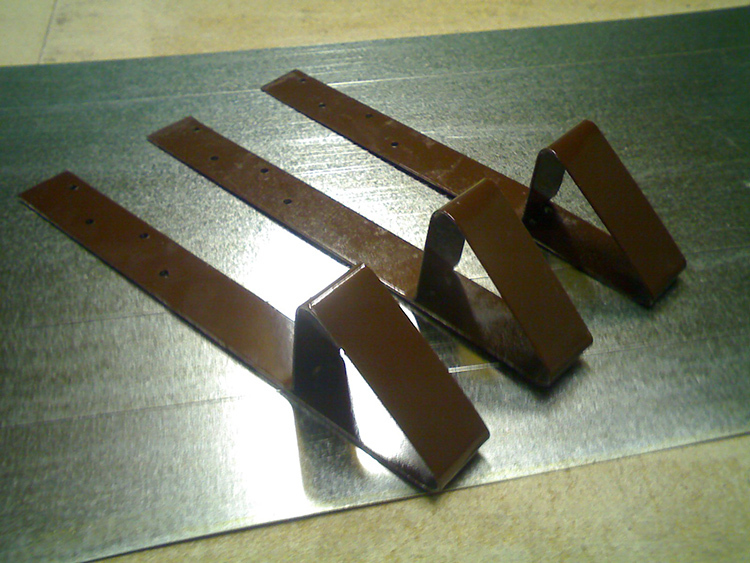
Tubular snow holders
The manufacturing process for tubular snow holders can be implemented in different ways. It all depends on the place of installation and snow load. We suggest watching a video that describes in detail how to make such structures from plastic and metal:
How much do roof snow guards cost - price overview
If you decide to buy snow guards for the roof, you should first get acquainted with the average prices for similar products. The cost depends on the design features and dimensions. The price of a universal tubular snow guard with a length of 3 m will be higher than that of a two-meter system. We offer you to get acquainted with the average prices of snow holders for the roof:
| Model | Characteristic | Price (as of January 2020), RUB |
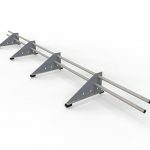 | Length 3 m, snow holders with a diameter of 35 mm, powder coated | 1100 |
| ||
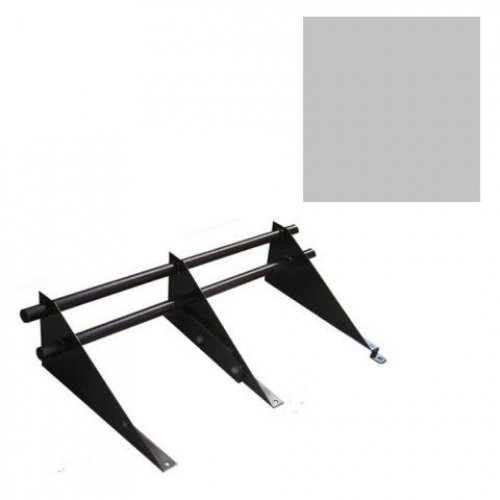 | Length 3 m, two pipes | 950 |
| ||
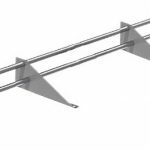 | Length 3 m, for metal tiles, non-galvanized profile | 920 |
| ||
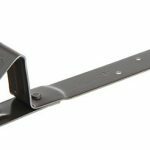 | Spot, weight 300 g, length 270 mm, height 55 cm | 43 |
| ||
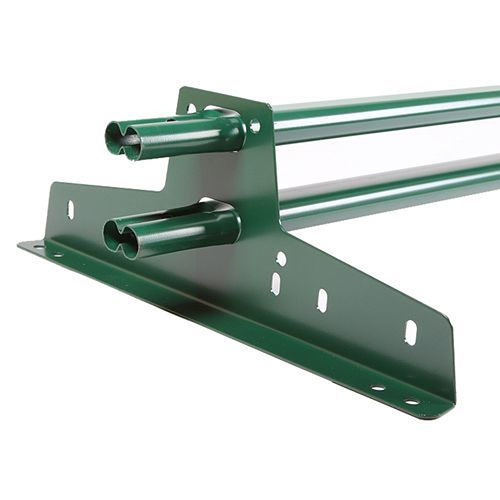 | Tubular model, length 3 m, powder coated | 1600 |
|
Share in the comments how you ensure snow retention on a roof made of metal or other material. How satisfied are you with the achieved result?
